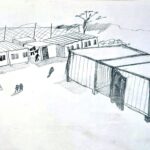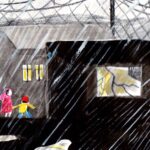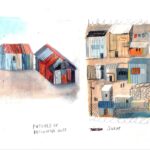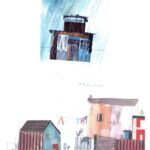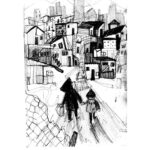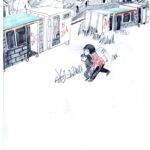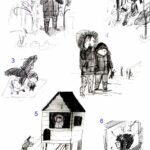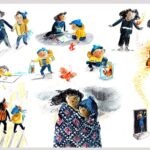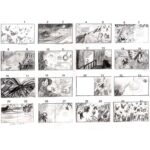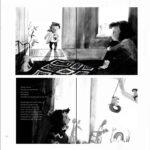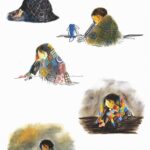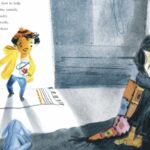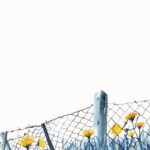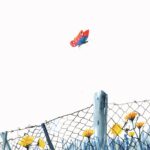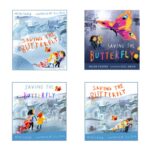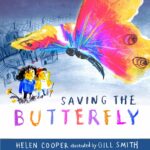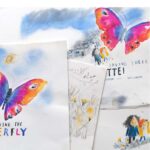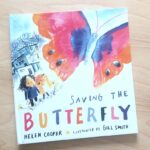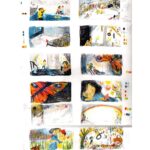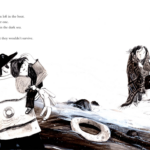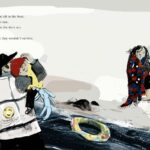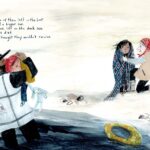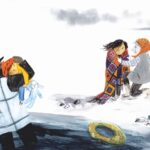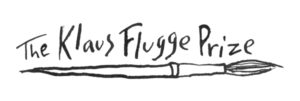
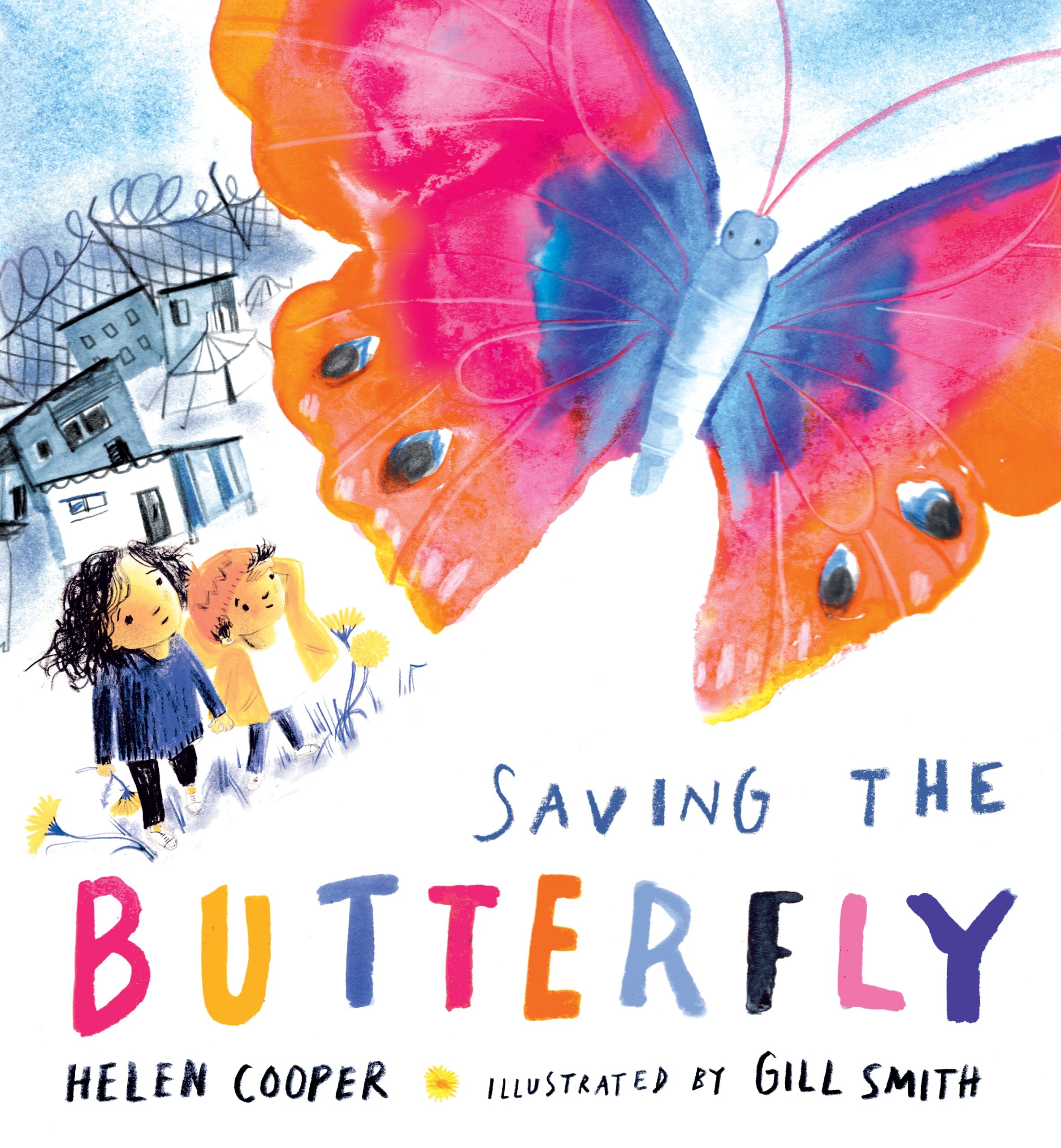
Saving the Butterfly by Gill Smith
Saving the Butterfly, illustrated by by Gill Smith is one of the five books on the shortlist for the 2023 Klaus Flugge Prize.
Two young siblings are rescued from the sea and start a new life in a new country. The older struggles, choosing to stay in their dark house until her little brother brings her a beautiful butterfly and new hope. This is a special book, say the judges, and Gill Smith handles a difficult subject really well. The illustrations are atmospheric and expressive, and we connect with the characters.
Former Klaus Flugge Prize judge, Senior Lecturer in Education: Primary English and Children's Literature, Mat Tobin interviewed Gill about her book.
Yours is the only picture book shortlisted in which the writer and artist are different people. Could you tell us about your collaboration with Helen, who is an accomplished illustrator herself, and the joys and challenges of bringing her words to life in the picture book?
The first reading of Helen’s text really moved me. It is both poetic and powerful and it doesn’t patronise young readers. It sparked many questions and initial ideas flowed quickly in my sketchbook. Helen’s feedback was always insightful. She generously encouraged my own interpretation and it felt like an experienced illustrator was offering me a hand. The collaboration with Helen and the Walker Books team was incredibly supportive, enabling me space to trust my own instincts and take risks. It felt very important to tell this story sensitively at a time when the media was filled with shocking images showing the unfolding human tragedy of the refugee crisis. It seemed more important than ever to tell the children’s story and to support teachers and parents, through the teaching notes to begin conversations with children about this difficult subject.
Can you share your journey into illustration and how the works of Charles Keeping and Ezra Keats have influenced your style and thinking? Did their work inform your approach to illustrating Saving the Butterfly?
Rediscovering the work of Charles Keeping and Ezra J Keats during my MA helped me to think about the kinds of stories I wanted to illustrate. I love the authenticity of the characters in books such as Charlie and The Carthorse and A Snowy Day and how urban environments are made beautiful and atmospheric through colour and texture.
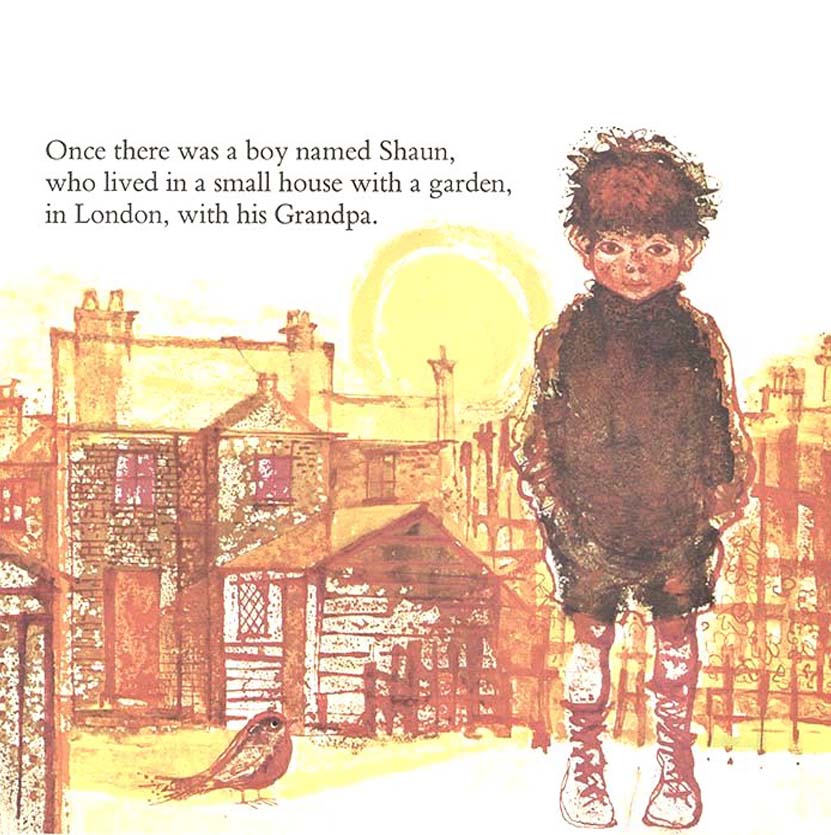
Charles Keeping, Shaun And The Cart Horse, 1966, Oxford Press
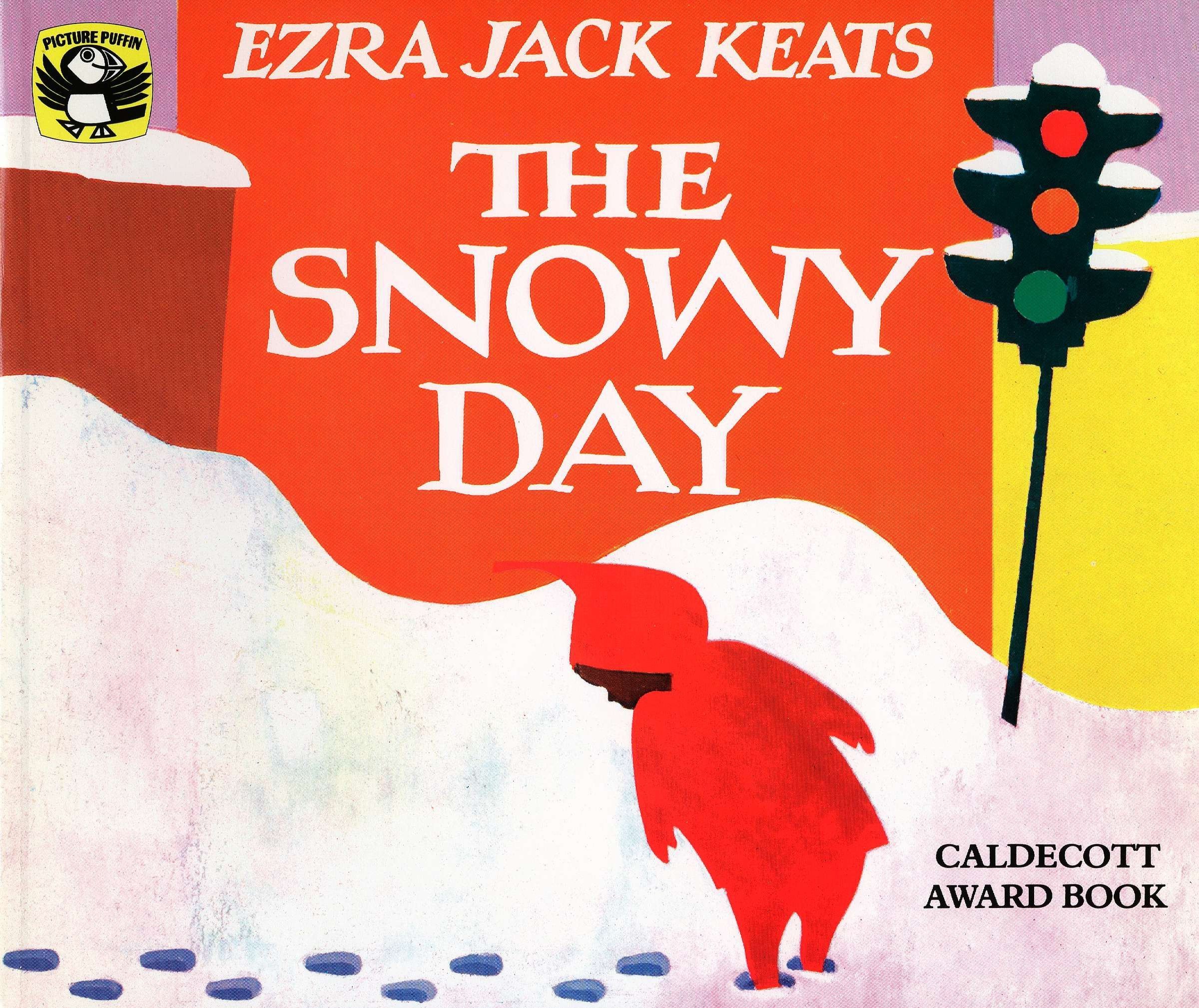
E.J.Keats, The Snowy Day, 1962, Puffin
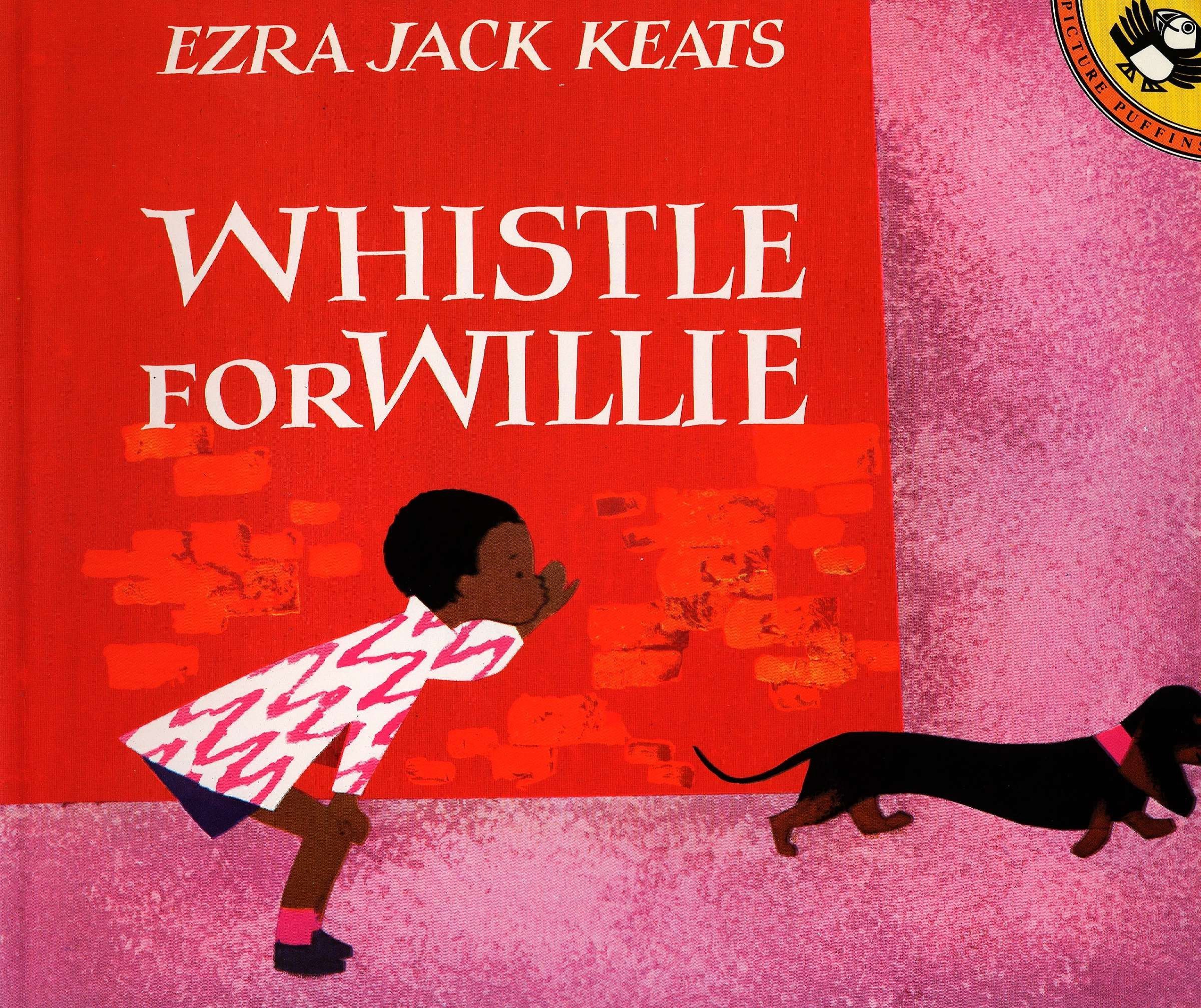
E.J Keats, Whistle For Willie
During my MA, I had a breakthrough with my work when I connected with the worlds I knew, such as my own community, childhood and inherited family stories. Keeping was a native of inner city London and used the East End as the backdrop for his books. Many of his picture books make credible narratives out of the daily lives of back street children. I refer to this quote often:
‘They've been about what I know and what I see and what I have enjoyed, and probably what I have been frightened of….and when it comes to my own actual work later in life, I tend to keep within what I could see as a child. That was mainly a small garden, a fence, and a large back wall. Against that back wall many things took place.…This was an exciting, tiny world to live in.’ (Keeping, 1983)
In Saving the Butterfly, I drew on memories of growing up with my little sister and how protective that bond can be. I am inspired by the simplicity and freshness of Keats’ compositions and how his books are grounded in a child’s emotion and sensory experience rather than plot. This influenced my approach for Saving the Butterfly in showing the interiority of the little girl. I wanted to communicate her fears in the details around her such as the blanket and big bed.
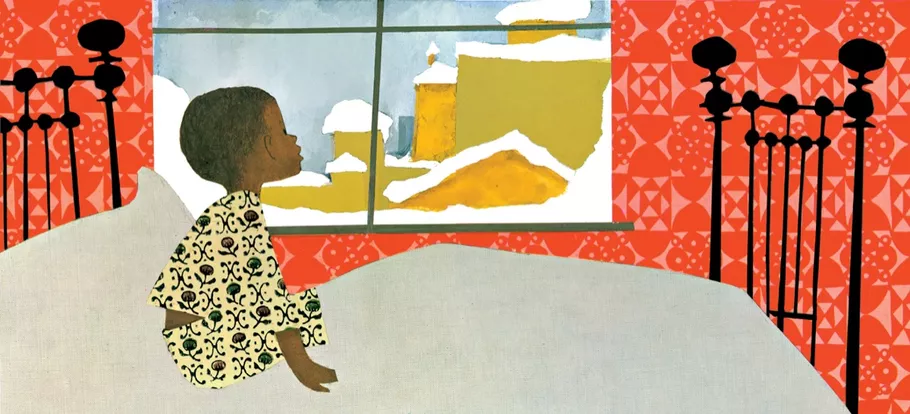
The Snowy Day EJ Keats
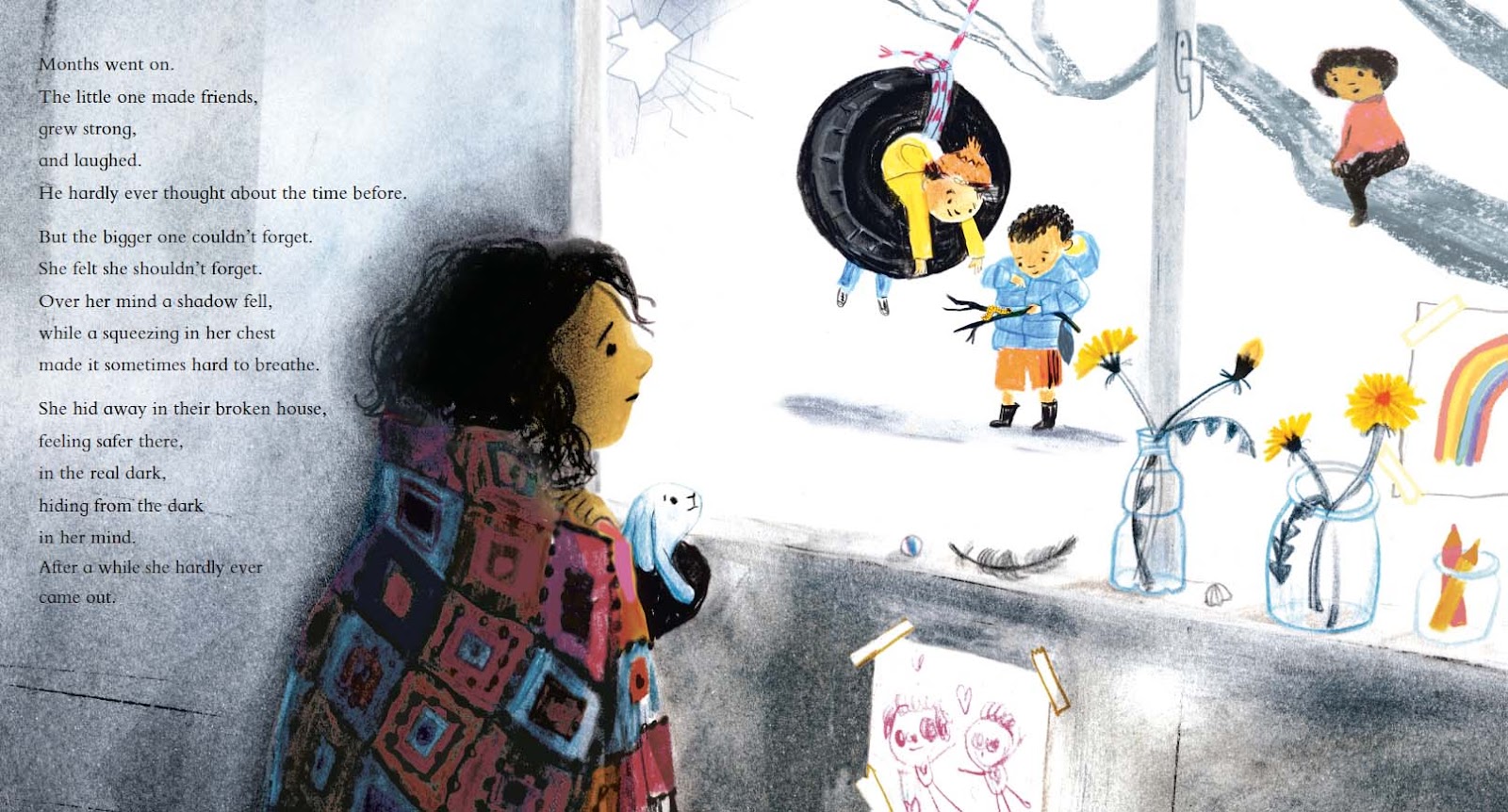
You have mentioned doing research for the book. Could you tell us more about your sources of inspiration and perhaps share any sketches you made during the process?
Some of the first sketches show my attempts to find the characters, the little one and the bigger one and their world. Initially, I drew from photographs and documentaries about the experiences of refugees. The film Capernaum (2018) directed by Nadine Labaki, about a Beirut Street kid had a huge effect on me.
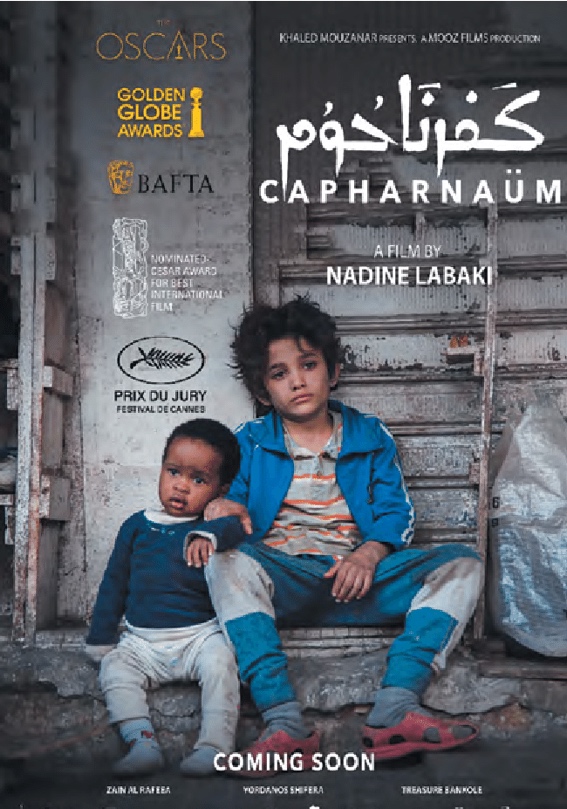
Helen Cooper’s poignant words ‘Somebody helped, someone else found them shelter. A broken house’ inspired me to explore all kinds of houses and shelters for ideas, such as the favelas in Brazil, the slums in Mumbai, refugee camps and caravan parks. The architecture of such places is emotional in that it is fragile, chaotic and insecure, all adding to a sense of rootlessness and not at all what a home should be.
Can you talk us through your working relationship with Denise Johnstone-Burt and Louise Jackson, the Editor and Designer, respectively? How did they collaborate with you to reach the final draft?
I am in awe of how Louise and Denise instinctively know how to strengthen the structure and pace of a picture book story, how to emphasise big moments such as the wordless spread depicting the siblings embrace. We established a brilliant zoom relationship throughout the pandemic. Our dialogue was a welcome constant in those strange and isolated months while I developed characters, created thumbnails, rough black and whites and then final colour artwork.
I really enjoyed the peritextual elements in the picture book and how you utilized the cover, endpapers, and title pages to enhance the storytelling. How were illustrating these parts different, and why were they still important to you?
I enjoy using these opportunities to add to the story and create a reading experience as soon as the book is opened. The title page offered the opportunity to show what had happened to the characters prior to the story, their journey across the dark sea. I wanted to spark an immediate reaction so that a reader wanted to turn the page and find out more. Louise suggested using the barbed wire and dandelions from a previous spread for the endpapers. It seemed to get to the heart of the dichotomy of darkness and hope. The cover went through a process of trial and error and I have to thank Louise for the guidance and her wonderful design.
Can we talk a little about your use of colour throughout the book; the greys in contrast to the quilt and the butterfly? How did you go about using colour to help tell the story?
Colour is so integral to this story. There is the bright butterfly, the dark sea and the sudden rainbow, so it felt instinctive to include brighter colours as a way of showing tiny incremental signs of hope despite the terrible circumstances. I found that my initial colour attempts had less emotional impact than my black and white roughs so I had a rethink and started to limit the palette so that the spreads gradually move from monochrome to more hopeful colours towards the conclusion. I felt I could say more with less.
It was a challenge to retain continuity with the colour palette at times when using mixed media. I began to remove some of the neutrals and green from the palette and I think the spreads benefit from white space.
Here are a few of my attempts. Often using photoshop for quick colour experiments helps before moving on to paint and pastels.
Besides the illustrators we've discussed, are there any current illustrators whose work you love to explore and enjoy?
My favourites include those wonderful illustrators of books I grew up with. Shirley Hughes, Helen Oxenbury and Raymond Briggs feel like old friends. I love the graphic quality of mid-century illustrators such as Eveline Ness and Alice and Martin Provensen.
I am a huge fan of Laura Carlin’s beautiful work. It is never predictable and retains such simplicity and playfulness. Beatrice Allemagna’s exhibition in Bologna this year was fascinating. It blew me away. Recently, I have discovered Benjamin Phillips’ amazing drawings. I loved his illustrations in the graphic novel Alte Zachen. I always look forward to books by Julie Morstad and Julia Sarda for their fantastic girl characters and attention to detail.
Lastly, could you share some information about your current and future projects? What can we look forward to reading from you in the future?
It was a real thrill to illustrate Victoria Hislop’s Marias Island. There is a picture book written by the wonderful David Almond, with Walker Books coming out later this year. I can’t wait to share more of this!
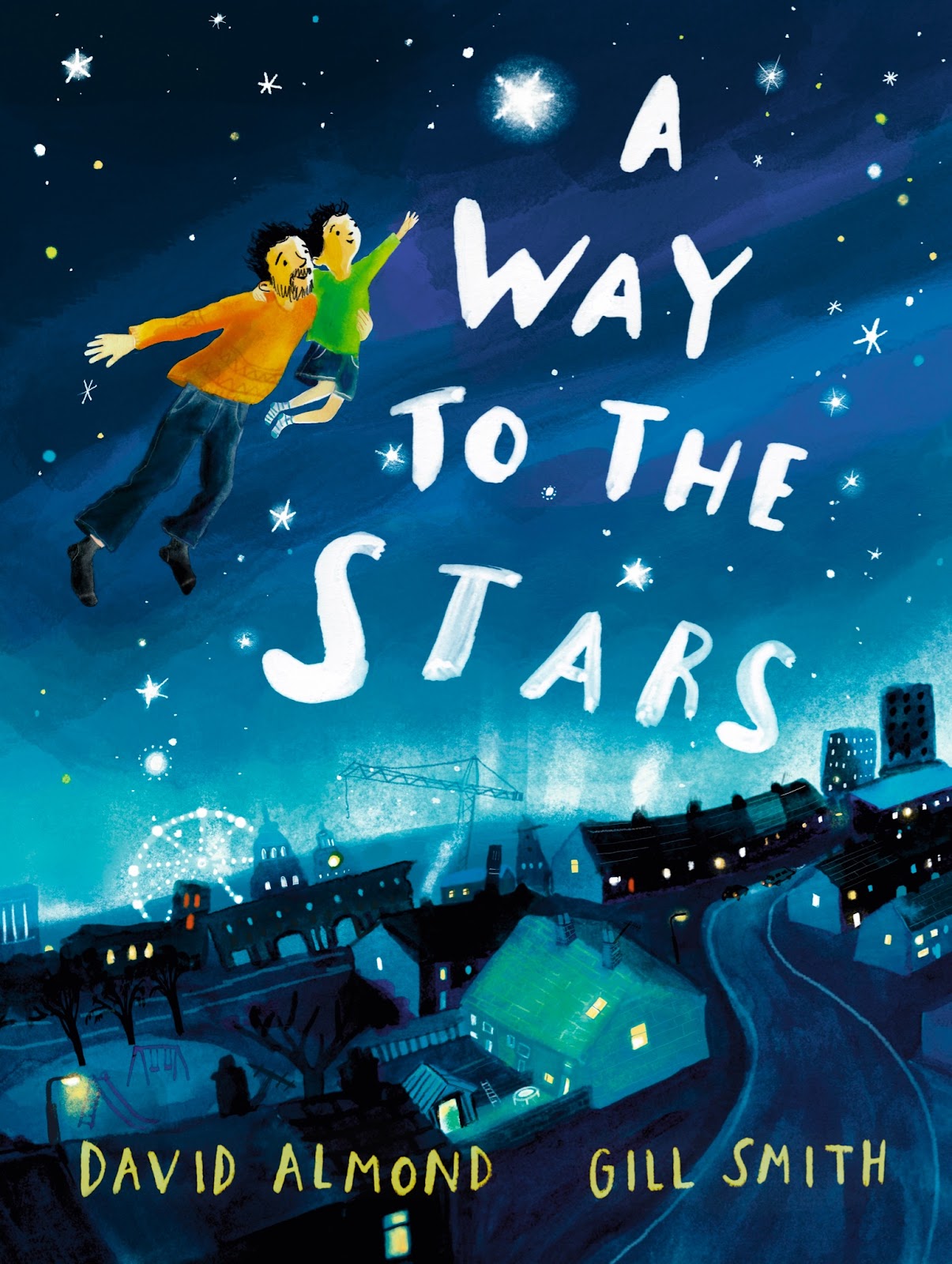
Currently, I am illustrating a beautiful story written by author Katya Balen. I feel very lucky that I get to illustrate the words of these gifted writers. My challenge is to write a picture book of my own in the near future.
Saving the Butterfly is published by Walker Books, 978-1406397208, £12.99 hbk.
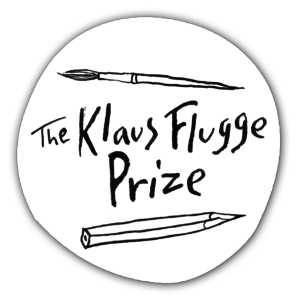
The Klaus Flugge Prize is funded personally by Klaus Flugge and run independently of Andersen Press.
Website maintenance & Copyright © 2023 Andersen Press. All Rights Reserved. Privacy & Cookie Policy.
